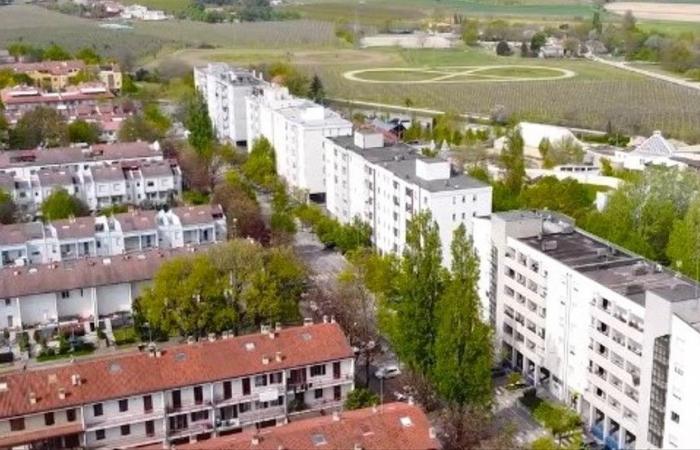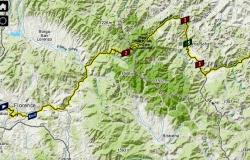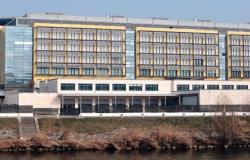Rents that cannot be found, homes in the historic center that cannot be redeveloped and a suffocating bureaucracy with no strategies for the future. These are the critical issues of urban planning sector in Faenza and not only, where it seems lack of an overall vision. We have heard on this topic Riccardo Casamassima, director of Coabi, a housing cooperative founded in Faenza in 1979. Coabi has built over 550 homes, 60% in Peep or affiliated areas.
Interview with Riccardo Casamassima: «There is a lack of a real vision of the future, and over the years there has been no support for quality public housing»
Casamassima, what are the major critical issues that are then reflected in our Faenza context?
Without mincing words, there is a complete lack of a policy that seriously addresses the housing and housing problem. There is no general vision towards which to aim to respond to current and future needs. This vision is sorely lacking at a national level, especially with regards to fiscal policies, but also at a regional level: it is the Region that has the main competences in urban planning and construction matters.
What are the current needs in Faenza?
The demand for housing is high, but homes are neither available for purchase nor for rent. Or rather, if in some way families manage to find a way to reshape their expectations regarding purchasing, the situation regarding renting has been truly critical for several years. And this transversally concerns singles, elderly people, young couples, foreigners, the latter also perfectly integrated into the territory.
What are some of the reasons why supply and demand do not meet?
On this issue I go a little against the grain of common thinking. I believe that the approach to environmental sustainability in this sector over the last twenty years has been very ideological. A class A home is, in fact, not affordable for some categories of buyers and is therefore accessible only to a few. In recent years there has not been an inclusive approach capable of promoting quality public housing. I feel like comparing this type of house to an electric car: how many citizens can really afford them? And how ecological are these latest generation homes really, or is there instead of greenwashing behind? I’m not saying that the way of building houses in the past was better, but some standards of requests could perhaps be envisaged as upgrades over time, to be built starting from an accessible home base. I would like to point out that seismic and fire safety do not fall within this scope. For our cities, on a social level, sustainable housing must go hand in hand with accessibility. Among other things, having an affordable quality home is the best possible investment for a citizen.
In what sense?
You can also have an excellent salary, but if you don’t have your own house that meets certain needs, in fact you are still precarious in your lifestyle, and you struggle to put down roots in the community. One of the foundations of democratic society is the home. A non-individualistic ecological and environmental approach should also be promoted. I am thinking of photovoltaic panels, which require an overall approach and not private micro-interventions, pushing for the creation of energy communities and improving incentives.
Are there really three thousand empty properties in Faenza, as we often hear?
I believe that these numbers are exaggerated, but in fact there are large areas of the historic center where the buildings are effectively empty. These are largely properties that should be renovated, but the owners cannot afford investments of that type. Often these properties are too large for a private individual, but too small for a company that wants to invest. Here legislation should intervene to encourage demolition and reconstruction, without being suffocated by bureaucracy. However, all of this must be encouraged and supported by politics, otherwise everything will remain at a standstill. The Municipality should work synergistically with private individuals, but this does not always happen. Another theme to bring to attention, and which will have an increasingly more impactful impact in the coming years, is that of the elderly and social housing, on which interesting projects are also being developed in Faenza.
The flood aggravated an already critical situation in the housing market. What role did land use play in what happened?
Flooding and land use should not be seen as linked in themselves. Many newly urbanized areas were not flooded, with the exception of Orto Bertoni where the river bank broke. Our region has had very high economic growth rates, including Faenza, also thanks to land consumption. I am thinking of the growth of the industrial area of Faenza: this has meant that our city is logistically attractive on an economic and housing level. Many parks and cycle paths, in reality, are the result of land consumption and the urbanization costs given to the Municipalities. Now we certainly need to repair some excesses, but it is not by standing still or always saying “no” that the problem is solved, on the contrary.
And what to do in the now consolidated neighborhoods that have flooded?
There we must acknowledge that the homes and inhabitants are now there and everything must be done to make them safe.
Samuele Marchi






